After a week in Amsterdam, Don and Elizabeth took a train to Paris. On their first day there, they took the train to Chartres. The train ride was interesting, going near some of the yellow rapeseed, or canola, fields.

After a short walk from the train station they could see the Cathedral rising above the town.
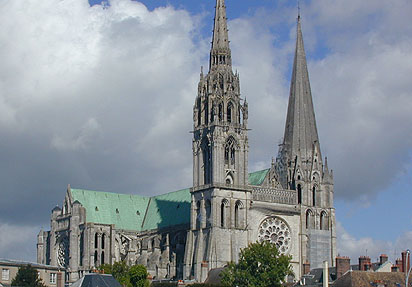
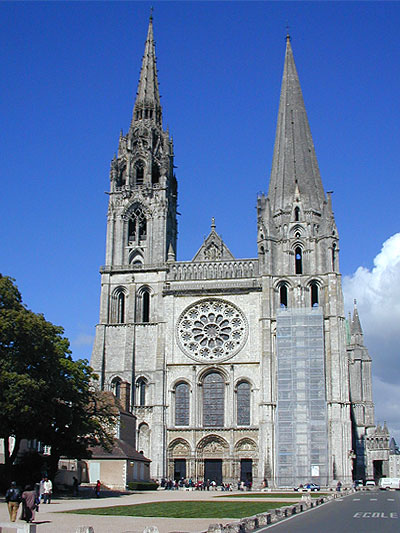
From the main square they got a good view of the Cathedral. The south tower (right side of the image) was completed in the 1160. The north tower was completed about 1150 and rebuilt in 1513 after the destruction of the wooden steeple by the fire. The rose window was built in early 13th century. The central portal, called "Portail Royal", is completed about 1155.
The interior is breathtaking with its design and stained glass.
After the original Chartres cathedral was destroyed by fire in 1174, architects designed the new church with 176 stained-glass windows. Flying buttresses, an innovation of Gothic architecture, enabled builders to accommodate the glass into the structural design. Although some of the original windows were rescued from the 1174 fire, most of the stained glass in the famous French church was created from 1210 to 1260.
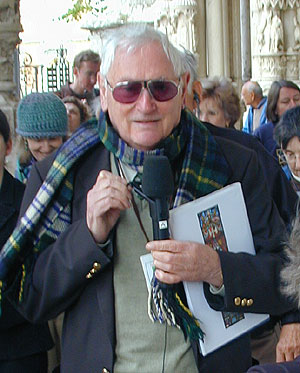
Malcolm Miller has been giving talks at the Cathedral for 47 years. We were privileged to be able to hear him again. He speaks of the Chartres Cathedral as a story in statuary and stained glass.
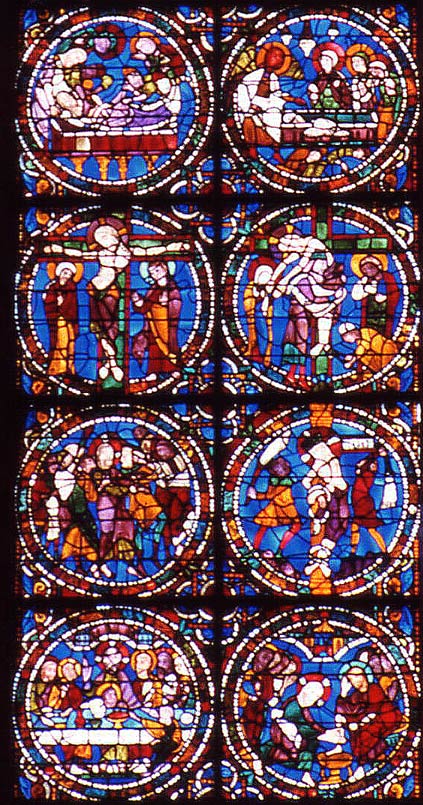
Stained glass windows are read from the bottom up and left to right. This is demonstrated in the segment of the Passion and Resurrection window. Start reading at the bottom left.
In the left picture, Christ's body is being prepared for burial. In the right picture, the women discover the tomb is empty on Easter morning.
In the left picture, Christ is on the cross and Mary and John the Apostle are beneath the cross. In the right picture Jesus is taken down from the cross by Joseph of Arimathea and Nicodemus. Note that the cross is pictured as a living green, by virtue of His life-giving sacrifice.
The left picture shows the betrayal with the kiss of Judas and the cutting off of the ear of Malchus. The right picture shows Christ tied to a column, being scourged by two men with large whips.
The left picture shows the Last Supper and the right shows Jesus in Gethsemene with Peter, James and John.
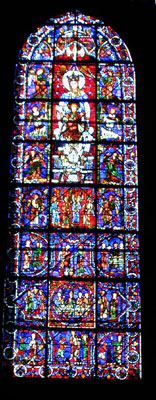
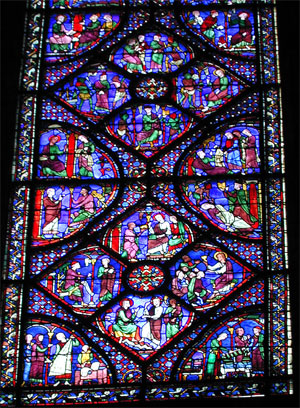
The window on the left is the "Blue Virgin" window, and the one on the right is of one of the New Testament parables.
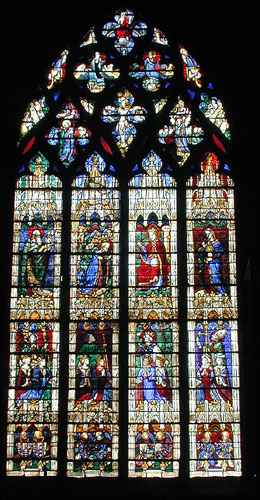

The window on the left shows some historical figures from the Old Testament and the window on the right is the "Charlemagne" window.
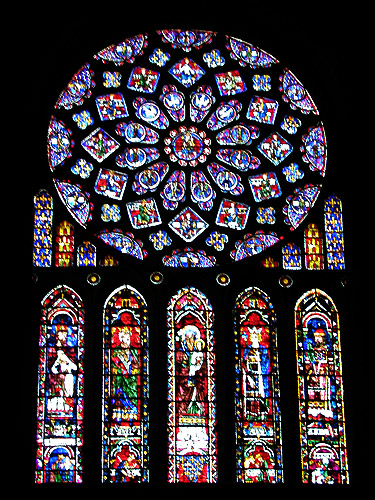
The North rose window connects Christ with the Old Testament figures who prefigure Him. Twelve minor prophets are in the outer semicircles and the 12 Kings of Judah are in the squares around Mary and Christ. In the lancets below St. Anne is the central figure, Melchizedek and David are in the left lancets and Solomon and Jeroboam are in right lances.

The statues in the left group are Melchizedek with a chalice, Abraham preparing to sacrifice Isaac, Moses pointing to the brazen serpent, Aaron or Samuel about to sacrifice a lamb, and David carrying a spear and a crown of thorns.
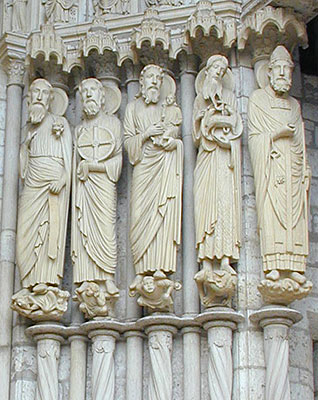
The figures in this group are Jeremiah the prophet, Simeon with the Christ Child, John the Baptist pointing to the Agnus Dei (Lamb of God), and Peter with the (missing) keys, standing on a rock.
Don had climbed the tower at Chartres 30 years earlier and was determined to do it again.
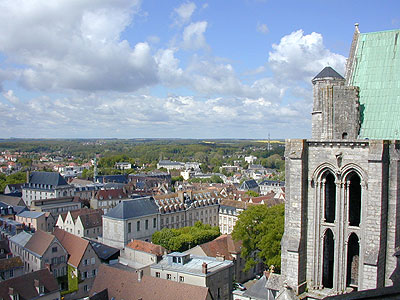
A view of the city from a lower level of the tower.

A view of the roof and the top of the flying buttresses.
 A view of the countryside.
A view of the countryside.
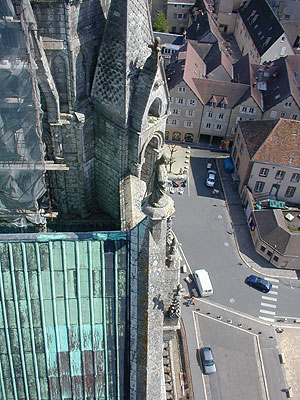 A view of the street below.
A view of the street below.
Don and Elizabeth also took a short walking tour of the old city after lunch.

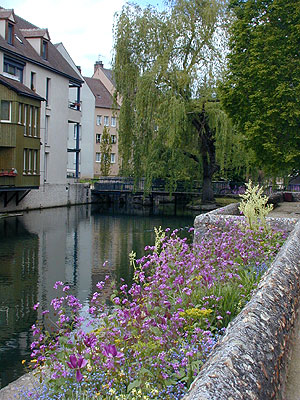

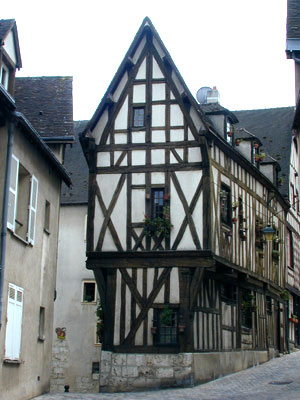
Back to Paris.